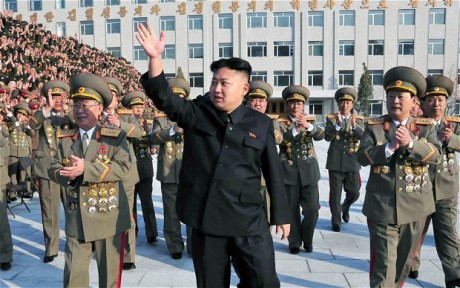In August 2013, online magazine Africa Confidential reported that the Tanzanian military is employing eighteen North Korean military technicians and army officers at the Dar es Salaam airport, purportedly to service and repair Tanzania’s aging Soviet MiG-21 bombers. This report came just two weeks after Panama seized a North Korean ship, en route from Cuba, which was found to be carrying two MiG-21 bombers. Cuba confirmed that the ship was transporting missiles and fighter jets, but defended its actions, saying that the armaments were “obsolete defensive weaponry” being sent away for repair to North Korea.

While the archaic nature of the weaponry is undeniable, their final destination is less certain. The report by Africa Confidential claimed those MiG-21 planes and parts were actually not bound for North Korea, but for Tanzania. Tanzanian army chief General Davis Mwamunyange denied the report, evasively saying “We don’t have any aircraft or other military equipment manufactured in North Korea. Why then should we hire their technicians?” But the article insists that North Korea and Tanzania are not just cooperating in servicing their antiquated Soviet bombers, but importing arms as well.
Purportedly, two senior North Korean military officers, on the payroll of the Tanzanian military, have set up a private company to import the arms. Tanzania’s Minister of Foreign Affairs has refused to either confirm or deny the allegations, despite the evidence of at the very least military cooperation. Beyond this particular instance, a pattern of increasing North Korean-African engagement is emerging. North Korea has taken advantage of an abundance of entrepreneurial opportunities in Africa, from servicing antiquated Soviet equipment, to smuggling ivory, guns, ammunition and Soviet Tank parts, like the shipment discovered by South Africa destined for the Republic of Congo in November 2009. North Korea is no stranger to the continent, having provided assistance to many liberation movements, including Tanzania’s, but the past year has seen a ramped up effort to engage various African nations.
African engagement with North Korea highlights the continued marginal position that most great powers ascribe to the region.
Namibia, in particular, appears to have developed a special rapport with the North Korean government. Located in the south-west corner of Southern Africa, between the Namib and Kalahari deserts, Namibia is the driest country in sub-Saharan Africa. With a population of just 2.1 million, it is one of the most sparsely populated nations on earth. What then has attracted North Korea? The North Koreans have found an opportunity to diversify beyond the smuggling of missiles and military hardware and have a slice of the construction industry. North Korean company Mansudae Overseas Corporation has over the last decade been awarded several large contracts by the Namibian government for various public works projects including a war memorial, a new State House, a new presidential residence and most recently a new military museum. Namibia usually has a tender process for such contracts in which companies are invited to bid for the rights to a project, however all three projects were an exception to the rule. Namibia’s founding President, Sam Nujoma, like the Kims, has a penchant for venerating and mythologizing military struggle, even though Nujoma, like the Kims, saw very little military action. These activities are a direct outcome of an agreement signed between the two countries in 2008 to “re-energize” their ties and to strengthen bilateral co-operation on trade, commerce, transport, energy and defense.

It is not only in Namibia that the North Koreans have been building national memorials. Senegal, Botswana, Zimbabwe, and Mozambique have all had public works projects managed and constructed by North Korean state owned companies, although Namibia has seen the greatest activity. Digging beyond the surface, what can we make of the nascent relationship between North Korea and these African countries?
In Africa, North Korea has found a discreet clientele of war lords and corrupt government officials who are willing to violate U.N. security resolutions and, more importantly, pay cash. North Korea is desperate for foreign reserves in order to purchase the luxury items that Kim Jong-un provides to the country’s elite in exchange for loyalty.
African engagement with North Korea highlights the continued marginal position that most great powers ascribe to the region. During the Cold War, Africa was a contested space in the superpower rivalry, but after the collapse of this conflict in the 1990s the continent was largely ignored by the West except on the occasions of human catastrophe and calamity—consider Rwanda, Darfur, and Ethiopia’s food crisis. China capitalized on this lack of engagement in the early 2000s and has dramatically increased diplomatic ties and commerce with the region to the effect that in 2009 it replaced the US as Africa’s largest trading partner. Comparisons of Chinese and North Korean engagement with Africa would be similar to comparing a dragon and shrew, but what they have in common is that both countries have exploited the lack of interest shown by the west to Africa. Even with the flurry of “ Africa Rising” rhetoric coming from western news agencies, little has been done by western governments to move beyond verbiage and into concrete policies.
North Korea’s impact on the continent is in no way near that of the Asian superpowers; however, it has managed to leave its own mark by bringing a piece of Pyongyang’s trademark style to several African capitals.



